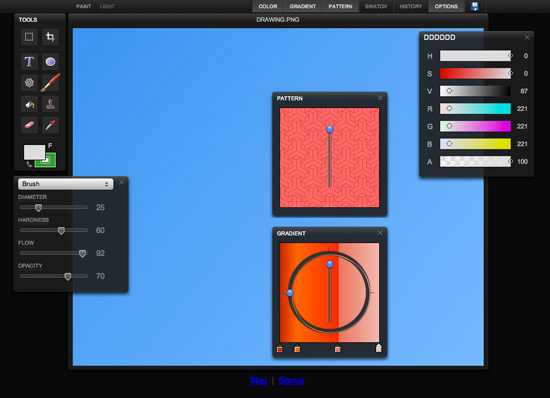Posts from ‘Web Development’
Great Video on Spec Work
Couldn’t have said it better than this video.
Pulling together a bunch of designers or companies to pitch for a web design project may seem like a wise idea but may actually work against you.
We previously talked about our new app, MockVault. It’s now available immediately for signups!
What is MockVault?
 MockVault lets you manage your designs and versions with ease at the backend and present them professionally to your clients at the frontend.
MockVault lets you manage your designs and versions with ease at the backend and present them professionally to your clients at the frontend.
To get a design approved, it’s not all about the design, it’s how you sell it. When sending a design to your client over the web, different format yields different results. If you’ve been sending mockups in PDF, Powerpoint or even in multiple JPEGs, your designs may not look like how it should be when it’s coded. This results in unnecessary requests for changes, wasting you time.
For over 13 years, we’ve tried and tested several ways of presenting our designs to clients. Only one format deemed the most effective in terms of getting it approved. It’s by placing annotations over the mockups and displaying it like the actual website.
The reason why annotations raises approval rates is because it’s easy for them to understand what they’re looking at. Guiding your clients through is critical if you want them to see the design the way you see it.
It is difficult to guide your client through your design over the web. With MockVault, it’s easy.
Check out MockVault!
Less than 8% of the people interviewed at Times Square New York know what a browser is.
There’s no surprise that more people around the world, not just Times Square alone, doesn’t know what a browser is, don’t use the internet as much as we would like to think, are less savvy and would get lost if the site is designed to be more complicated than they would have liked.
It’s a good place to start thinking about these users who are going to use the next website you design. Watch the following video and be surprised:
Found at: UX Magazine
Will HTML5 replace Flash?
I was skeptical at first, until a few experiments with HTML5 pops up across the web that caught my attention.
These experiments looks like they were built with Flash, but they’re not. What’s more, the performance was incredibly better than Flash.
Here’s two awesome examples (note: you need to view them on a modern browser eg. Safari, Firefox, Google Chrome, NOT IE6!):
Sketchpad


Recently I have been thinking alot about where Flash is heading in the near and long term and how we as developers have to re-think the way we use Flash to build websites.
Continue Reading

As proclaimed by Adobe, Flash Player is the world’s most pervasive application runtime, with content distributed over 98 percent of Internet-enabled desktops.

For those of you who don’t know this yet, if you’re migrating from AS2.0 to AS3.0 or if you’re constantly using AS3.0 to develop your projects, this is a very handy ActionScript 3.0 Migration PDF reference. It clearly shows the difference between AS2.0 and AS3.0 and tells you what to import when using certain objects, it also tells you what objects has been removed in AS3.0. Certainly good to have it with you when developing AS3.0 projects or if you’re starting to learn AS3.0. There are also other cheatsheets for other platforms like AIR and Papervision which can be found here.
